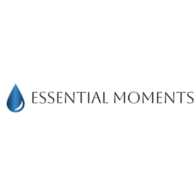Lymphatic Massage: Exploring Benefits & Potential Risks

Lymphatic massage is a gentle therapy aimed at stimulating the flow of lymph fluid in the body. This helps with detoxification, reduces swelling, and boosts immunity. In this article, you’ll learn about the benefits of lymphatic massage, how it works, and what to expect during a session. What Is Lymphatic Drainage Massage? Manual lymphatic drainage (MLD) is a distinct variety of lymphatic massage that involves gentle, rhythmic hand strokes to promote the movement of lymph fluid within the network of lymphatic vessels. This technique supports the function of the lymphatic system—a complex network made up of numerous critical components, each of which plays an important part in maintaining the body’s fluid balance and immunological function. By filtering waste and toxins through the lymph nodes, the lymphatic system plays a crucial role in detoxification, helping you to sustain a healthy internal environment. How do I know when to get Professional Lymphatic Drainage? Here are several major indicators that you need expert lymphatic massage treatment: Recurrent Infections Persistent Swelling and Edema Chronic Conditions such as Lymphedema and Fibromyalgia Headaches Digestive Issues Fatigue Skin Changes How important is early detection of Lymphatic Congestion? By working with healthcare experts from the beginning, you can ensure the development of a comprehensive treatment plan that addresses all aspects of your lymphatic health, including underlying causes and supportive therapies. Early discovery is crucial for treatment intervention, reducing the chance of complications such as: Fatigue Edema Chronic Swelling Fibrosis Skin Infections Swollen Lymph Nodes in Your Neck How Does Lymphatic Massage Work? Lymphatic massage utilizes a range of methods that incorporate gentle, rhythmic pressure to boost lymph circulation and support the body’s detoxification process. Developed in the 1930s by Dr. Emil Vodder, manual lymphatic drainage (MLD) utilizes precise, rhythmic hand movements to stimulate lymphatic flow through the vessels and nodes. These spiral-like strokes help to reduce swelling and edema, particularly after surgery or injury. By activating the lymphatic system, MLD increases the immunological responses, aids in infection prevention, and promotes the efficient elimination of waste and toxins. Studies have shown that managing post-traumatic edema is crucial for preventing secondary injury and promoting faster recovery in patients with orthopedic injuries, but further research is needed to determine its effectiveness in improving patient and disease-oriented outcomes for orthopedic injuries. More studies conclude that while preliminary evidence and animal studies support the potential benefits of manual lymphatic drainage techniques (MLDTs) in reducing edema and muscle damage markers in athletic injuries, high-quality clinical trials are needed to establish definitive guidelines for their use in sports medicine and rehabilitation. Additional research supports findings from a systematic review conducted to evaluate the effectiveness of massage in fibromyalgia. The review suggests that myofascial release provides significant benefits, particularly in reducing pain, anxiety, and depression. At the same time, manual lymphatic drainage may be more effective than connective tissue massage for stiffness, depression, and quality of life. Are There Any Risks or Complications of Lymphatic Drainage Massage? Lymphatic massage is generally considered a safe and effective method for managing lymphedema. However, it may not be suitable for everyone. You should avoid it if you have: Deep Vein Thrombosis Heart Disease Blood Clots Infection Stroke Kidney failure Health Benefits of Lymphatic Massage 1. Reducing Swelling and Inflammation Manual lymphatic drainage (MLD) is particularly effective in reducing swelling and inflammation, making it a go-to treatment for conditions such as lymphedema, arthritis, and post-surgical rehabilitation. Massaging areas without swelling creates space for congested lymph fluid to flow, reducing swelling. This technique can also help minimize facial puffiness and improve facial contours, giving you a more refreshed appearance. 2. Boosting Immune System Lymphatic massage is known for its significant role in fortifying the immune system. It improves the body’s ability to absorb and transport lymph fluid, elevating the immune response’s efficacy. During Manual Lymph Drainage (MLD), specific hand techniques exert pressure on the skin, helping to expel toxins and bacteria and bolster the body’s inherent defensive systems. 3. Enhancing Post-Procedure Healing Manual lymphatic drainage (MLD) offers significant advantages following cosmetic surgeries. It aids in recuperation, diminishes discomfort, and promotes better blood flow. It becomes a vital component of care after a procedure by fostering quicker healing and minimizing the likelihood of developing postoperative lymphedema. 4. Detoxification Lymphatic drainage massage helps eliminate waste and toxins from the body, resulting in a cleaner interior environment. This detoxification process reduces the strain on the liver and kidneys, allowing them to operate more effectively. 5. Improved Circulation This massage technique increases blood flow, supplying vital nutrients and oxygen to tissues while eliminating metabolic waste. Improves circulation benefits, cardiovascular health, and energy levels. 6. Relaxation and stress relief This massage’s soothing, rhythmic motions foster a state of relaxation and well-being. It can assist to reduce stress, improve sleep quality, and boost mental clarity. Self-Lymphatic Drainage Techniques Self-lymphatic drainage techniques can be a great way to maintain your lymphatic health between professional sessions. However, it’s essential to consult a healthcare provider before attempting these techniques, especially if you have underlying health conditions. The goal is to ensure that self-drainage is safe and appropriate for your specific situation. Self-administered lymphatic drainage methods require the application of gentle pressure alongside particular maneuvers aimed at stimulating the flow of lymph fluid. These techniques encompass soft, circular movements using one’s fingertips, gliding strokes oriented towards the lymph nodes, and progressing from the body’s outer extremities inward toward its core. To preserve their effectiveness, refrain from applying oils or lotions while performing these massages. Integrating Profesional Treatments with Self-Care By combining professional treatments with your self-care practices, you can enhance the overall effectiveness of both approaches. Here are some examples: 1. Hydration & Nutrition Drink plenty of water to keep lymph fluid moving efficiently. Incorporate anti-inflammatory foods like turmeric, ginger, and leafy greens. Consume a diet rich in fruits, vegetables, and lean proteins to support detoxification.
Top 8 Benefits of Sauna: Boost your Health & Wellness

Are you wondering what a sauna can do for your health? Passive heat therapy offers numerous benefits, from boosting your immune system to reducing the risk of vascular diseases such as high blood pressure and neurocognitive diseases. This article will explore 8 Benefits of sauna use and how the wellness tool can extend your health span. Passive heat therapy encompasses a diverse range of thermal wellness modalities, including the following: Hot tubs Waon Therapy Hydrotherapy Infrared Saunas Finnish Saunas Steam Baths Among these, Finnish saunas stand out as the most extensively researched. They are distinguished by their extreme temperatures spanning 80–100°C and remarkably low humidity levels between 10–20%. Frequent sauna sessions offer a holistic approach with remarkable benefits, enhancing peak physical performance and supporting a longer, more functional lifespan. Top Sauna Benefits 1. Enhanced Cardiovascular Health Regular sauna sessions have a notable impact on improving cardiovascular health. They increase your heart rate and elevate your core temperature, similar to what happens during moderate exercise. This exposure to heat enhances autonomic nervous system responses that are critical for sustaining a robust cardiovascular system, effectively providing a low-intensity cardiovascular workout. Engaging in frequent sauna bathing has been associated with reduced risks of mortality due to cardiovascular issues. 2. Improved Blood Pressure Regulation Are you aware that sauna activities can help manage your blood pressure? While initial heat exposure during a sauna session may cause an uptick in blood pressure, consistent use over time has been shown to contribute to lower overall levels. This beneficial effect arises from saunas’ enhancement of blood flow, which ensures more oxygen and nutrients reach your blood vessels and skin cells. A 2023 study among men found that frequent sauna bathing (3–7 times per week) may help reduce the increased risk of all-cause mortality linked to high systolic blood pressure. Thus, regular sauna use could be a valuable addition to your routine for supporting heart health and longevity. 3. Stress Relief and Mental Well-Being In our fast-moving society, it’s essential to discover effective stress management methods for mental health. Sauna bathing may serve as a practical intervention if you have a high-stress profession, helping you to alleviate conditions such as: Chronic inflammation Oxidative stress Cardiometabolic disease Research shows that individuals primarily use sauna bathing for relaxation, stress reduction, and pain relief, with many reporting improvements in mental well-being and sleep quality. The findings suggest that regular sauna use is generally safe, with few adverse effects, and supports its potential as a therapeutic tool—though further research and wider awareness are needed to fully explore and utilize its health benefits. 4. Immune System Boost Engaging in regular sauna bathing improves the immune system’s capacity to combat infections by bolstering the production of white blood cells, which play a vital role in defending against illnesses. Sauna use stimulates the release of heat shock proteins that repair cells and fortify the body’s immune response. Research has shown that routinely using saunas can help the body adapt to repeated heat sessions, improving heat tolerance and potentially lowering mortality rates. This adaptation also reduces the risks of brain disorders like dementia and Alzheimer’s disease. The greatest health benefits, particularly in cardiovascular health and mortality reduction, are likely achieved when physical fitness is combined with sauna bathing, illustrating how various lifestyle habits can significantly impact your overall health. 5. Skin Health Enhancement The benefits of sauna use go beyond bolstering your heart and immune system. They are also remarkable for your skin. Engaging in sauna sessions induces profound sweating, which aids in the elimination of impurities and dead skin cells, thereby enhancing skin health. Regular sauna use can mitigate acne issues by minimizing pore blockages and detoxifying the complexion. Exposure to sauna heat encourages collagen synthesis, which is crucial for preserving the firmness and suppleness of the skin and resisting aging indicators. Consistently partaking in sauna experiences leads to clearer, more vibrant-looking complexions that exude a youthful appearance. 6. Respiratory Benefits The process of using saunas offers the remarkable advantage of facilitating easier breathing. A steam room’s warm and moist environment helps hydrate and dilate your lungs, enhancing air circulation and overall lung capacity. Studies have shown that sauna therapy offers significant benefits for lung health by supporting the respiratory system and helping to clear mucus from the airways. Regular sauna sessions may help improve lung capacity, ease breathing, and support overall pulmonary function, making them valuable complementary practices if you’re managing respiratory conditions or simply looking to strengthen your lung health naturally. 7. Better Sleep Patterns If you struggle with sleep, saunas might be the solution you’ve been looking for. Regular sauna use is linked to improved sleep quality, with 83.5% of respondents in a study reporting better sleep after using a sauna. The time spent in a sauna before sleep allows your body to cool down afterward, which is beneficial for improving sleep patterns. Additionally, sauna sessions are associated with increased deep and REM sleep, contributing to overall sleep health. Higher heart rate variability among sauna users also indicates better recovery and sleep quality. Regular sauna sessions can make a significant difference in enhancing sleep. 8. Excretion of Heavy Metals Via Sweat Another noteworthy advantage of engaging in sauna sessions is the detoxification from heavy metals. Sauna use supports the removal of toxins such as arsenic and mercury, as well as lead, by stimulating sweat production, which plays a crucial role in expelling these substances from your body. Sweating within a sauna boosts blood flow and stimulates the lymphatic system, both essential components for successful detoxification. Incorporating a regular sauna into your routine can facilitate the liberation of heavy metals lodged within fat cells, streamlining the detox process. Special consideration should be given when aiming to enhance the mobilization of heavy metals and chemical xenobiotics. In such cases, longer sessions are required and should be medically monitored. To optimize the benefits of this detoxifying activity, ensure you stay
How Spa Therapy Enhances Health & Mental Wellness
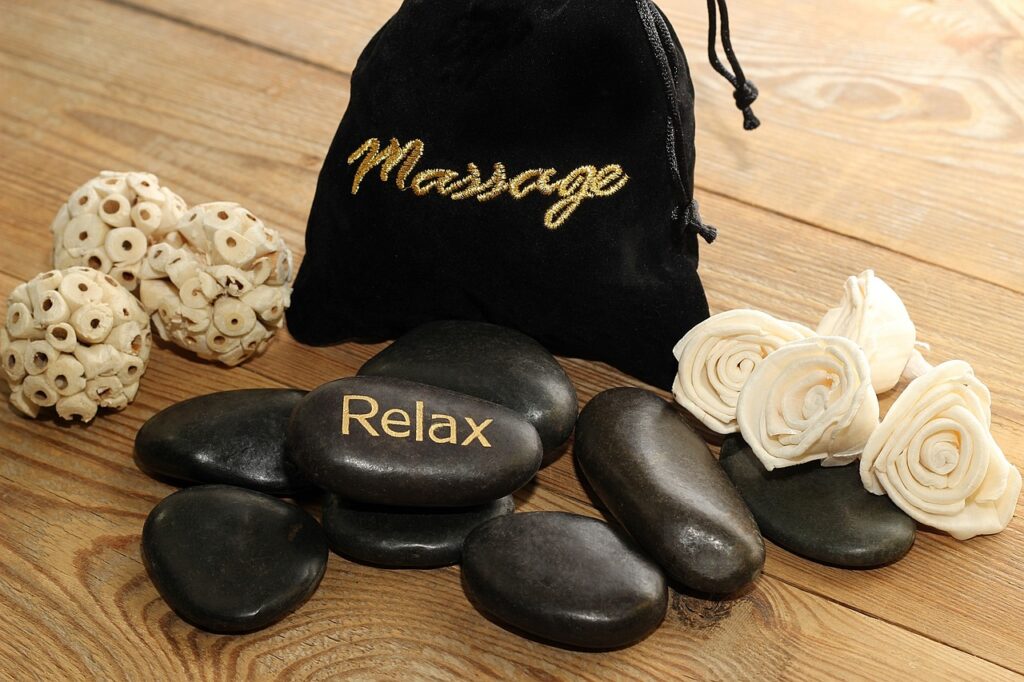
Spa therapy delivers evidence-based physical and mental health benefits through specialized therapies that restore balance and enhance overall well-being. This article examines spa-based healing modalities, benefits, massage varieties, and practical considerations. Understanding Spa Therapy The term Spa is derived from the town of Spa, Belgium, whose name in Roman times was Aqua Spadanae. Today’s wellness landscape features diverse spa varieties—from convenient day retreats to immersive destination sanctuaries and therapeutic health centers, each catering to distinct well-being journeys. These oases offer specialized treatments, from the ancient practice of hydrotherapy to various massage modalities, all meticulously crafted to induce deep relaxation and facilitate your body’s natural restoration processes. Central to spa therapy are havens that nurture an individual’s sense of being looked after, which can significantly bolster resilience against stress. To enhance their restorative effects, many spa treatments integrate natural components like mineral-rich spring water into their practice for a comprehensive approach to maintaining good health. Integrative Spa & Wellness Therapies Spa therapy, often associated with health resorts and referred to as health resort medicine, combines various therapeutic practices as follows: How does Spa Therapy impact our health? In today’s healthcare practices, spa therapies have transcended their reputation as mere indulgences and are now recognized for their considerable therapeutic value. These treatments contribute to mental and physical wellness and are essential to comprehensive health management. Studies have shown that spa therapy can effectively enhance well-being in middle-aged adults with common health issues. Another study has shown significant improvement in quality of life, pain, and functional measures in chronic low back pain patients after spa therapy sessions. To improve your cardiovascular health, spa methods like hydrotherapy and body wraps can enhance your blood flow, helping your body heal injuries more effectively. Heat or steam treatments stimulate your lymphatic system, promoting your body’s natural detoxification process and helping you eliminate toxins more efficiently. Regular spa sessions can strengthen immune system response due partly to decreased stress levels, which otherwise compromise immunity. Scent therapy combined with massage maintains hormone equilibrium while promoting mood improvements. This synergy underscores the extensive wellness advantages linked with consistent spa therapy engagement. According to a 2021 study, spa therapy sessions demonstrate significant efficacy in ameliorating depression, anxiety, and stress-related sleep disturbances while concurrently providing therapeutic benefits for chronic pain and musculoskeletal conditions. What are the Most Popular Spa Treatments? 1. Swedish Massage This traditional full-body massage technique uses long, flowing strokes to promote relaxation and ease muscle tension. 2. Deep Tissue Massage It involves a highly trained therapist using strong finger pressure and slow friction to affect the sub-layer of muscle tissue as far down to the bone as possible. It relieves muscle aches and tension, helping you feel recharged and relaxed. 3. Hot Stone Massage This elegant relaxation solution offers a perfect symphony of temperature (heated basalt stones) and touch, addressing both physical discomfort and mental stress and leaving you in a state of blissful calm. 4. Aromatherapy Massage Combines pure essential oils with massage techniques to enhance your emotional well-being. 5. Thai Influenced by traditional medical systems in India, Southeast Asia, and China, Thai massage is a rigorous technique in which a therapist manipulates the body into stretches, applying rhythmic pressures and loosening the joints. It’s typically practiced on a firm mat on the floor, and no oils are used. 6. Shiatsu Massage This is an ancient Japanese finger-pressure technique based on traditional Chinese medicine. Practitioners believe that applying pressure to traditional acupuncture points can fix imbalances in the body’s energy flow, aid relaxation, and stimulate lymphatic flow. 7. Reiki Originating in Japan, Reiki is a spiritual therapy of energy healing. It involves a practitioner placing their hands above the body in positions relating to vital organs and nerve plexus. This serves as the Qi (life force) channel to activate healing energy within receptive points. 8. Lymphatic Drainage Massage This gentle technique encourages detoxification and boosts the immune system by stimulating the natural flow of lymph. By supplying oxygen to the tissues, this massage technique increases blood flow and eliminates metabolic waste. Benefits of Spa Therapy 1. Stress Reduction Reducing stress is a widely recognized advantage of engaging in spa treatments. Methods such as massages and the use of essential oils are particularly effective at diminishing stress levels and easing anxiety symptoms. Aromatherapy massage, for example, is especially adept at promoting relaxation while improving mental and physical health. A 2019 study found that combining Aromatherapy with Music Therapy positively reduces anxiety and stress. These various therapeutic approaches foster feelings of peace and help significantly reduce stress by encouraging the body to produce hormones associated with positive mood states. 2. Pain Relief Spa treatments, including Hydrotherapy and Hot Stone massages, are widely acclaimed for their capacity to alleviate pain. Hot stone massages, in particular, can significantly ease arthritis symptoms by promoting muscle relaxation and enhancing blood circulation. Similarly, a 2021 study examined the effects of hydrotherapy in patients with non-specific low back pain (NSLBP). Findings revealed that after 10 sessions, participants experienced significant improvement in NSLBP symptoms. Additional research also demonstrated hydrotherapy significantly improved pain, function, and muscle performance in older women with knee osteoarthritis. Findings on Spa therapy for fibromyalgia concluded that adding spa therapy to standard medical treatment provides benefits for women with fibromyalgia, including reduced pain, fewer tender points, and improved overall well-being. 3. Improved Sleep Spa therapy is known to greatly enhance sleep quality. The deep relaxation that these treatments offer aids the body in unwinding, which assists individuals, particularly those who suffer from sleep problems, in falling asleep more easily and maintaining their slumber throughout the night. This level of relaxation is instrumental in improving overall sleep quality, thus promoting general health and well-being. Studies have shown that hot spring balneotherapy significantly relieves mental stress, improves sleep quality, and alleviates general health issues in sub-healthy individuals. Additionally, it
19 Best Wellness Retreat Ideas for 2025

Have you ever wondered how different cultures approach wellness? From ancient healing traditions to modern rejuvenation practices and invigorating workouts, a world of self-care is waiting to be discovered. Whether diving into soothing thermal springs, embracing sacred aromatherapy rituals, or participating in energizing workout activities, each practice offers a gateway to renewal and vitality. So, are you ready to indulge in the art of renewal and awaken your senses? Let’s explore 19 transformative wellness retreat ideas that will elevate your vacation into a sanctuary of bliss and rejuvenation. Let’s dive in: 19 Transformative Wellness Ideas 1. Workout on Water SupYoga in the Cook Islands Experience yoga postures on a calm lagoon enveloped by the spectacular allure of the Cook Islands. Find balance as you float above vibrant coral reefs, where serenity and challenge become one. 2. Signature treatments in the Safari, South Africa Revitalize in sumptuous spa services amidst the awe-inspiring vistas of the African savannah, where you can observe lions, leopards, rhinoceroses, elephants, and Cape buffalo. This extraordinary wellness oasis merges nature’s splendor with traditional African remedies to forge an unparalleled experience. 3. Horseback riding in Nicaragua Enveloped by its breathtaking shorelines and verdant terrain, this invigorating activity fosters a profound connection to nature, allowing you to traverse Nicaragua’s picturesque vistas in an engaging manner. 4. Quantum Yoga in Sri Lanka Start an uplifting journey of self-discovery through Quantum Yoga, integrating the foundational elements of Yoga, Meditation, and Ayurveda. 5. Diving, Snorkeling, and Fishing in Zanzibar, Tanzania Immerse yourself in the island’s crystal-clear waters, perfect for diving, and explore coral reefs teeming with vibrant marine life through local snorkeling activities. 6. High ropes challenge in Santa Catalina Mountains, USA If you are an adrenaline enthusiast, the high ropes challenge situated in the Santa Catalina Mountains of the USA offers a heart-racing adventure. This electrifying pursuit challenges both body and mind as you traverse various suspended obstacles well above terra firma. 7. Hata, Vinyasa, and Ashtanga Yoga, Pranayama (breath) in Cambodia In Cambodia, a variety of yoga retreats are available to accommodate varied tastes and approaches. Whether your practice aligns with Hatha, Vinyasa, or Ashtanga yoga, there are classes designed to meet your individual requirements. These sessions integrate Pranayama breathing methods to facilitate enhanced meditation and relaxation. 8. Herbal medicine journeys in Costa Rica Venture into Costa Rica’s verdant rainforests and embark on a voyage to uncover the therapeutic qualities of a myriad of herbs and plants. Embracing this comprehensive perspective on health and Costa Rica’s stunning natural allure presents a perfect setting for those yearning for an intimate bond with nature and age-old healing traditions. 9. Dawn Meditation with Buddhist Monks in Japan Participating in an early morning meditation session with Buddhist monks in Japan can be a profoundly peaceful experience. Through expert guidance from the monks, learn meditation techniques that enhance your spiritual connection and deepen your sense of unity with yourself. 10. Spa bathing in mineral-rich water amid a black lava field in Iceland Embark on an unforgettable spa voyage set against the spectacular backdrop of Iceland’s black lava fields. The therapeutic waters sourced from the Svartsengi geothermal plant are imbued with minerals that promote relaxation and foster skin rejuvenation. 11. Raw vegan cuisine and luxury wellness resorts in Bali Embrace the island’s customary Balinese fire blessing ceremonies and tailored Ayurvedic dietary plans. These approaches involve providing the body with nutrient-dense and flavorful raw vegan dishes that contribute to maintaining good health. 12. Majestic body treatments at a tropical beachside, Mauritius Indulge in sublime body treatments that revitalize your skin and amplify your natural beauty. This fusion of breathtaking Mauritius scenery and body care treatments establishes it as a premier choice among those passionate about their well-being. 13. Aromatherapy and massage under the palapa in Cancun Enhance your mental clarity while improving your well-being on the idyllic beaches of Cancun through sessions of aromatherapy and massage beneath a palapa. Embracing a holistic philosophy towards health, Cancun greets you with serene meditation opportunities along with comprehensive spa treatments. 14. Wellness festivals around the world Dive into events such as the International Yoga Festival in Rishikesh, India, the Bali Spirit Festival, St Lucia’s Tree-to-Bar cocoa harvesting, and others. These gatherings host an array of offerings, such as yoga retreats, meditation sessions, and workshops focused on comprehensive health. 15. Enjoy walks through pine forests in Croatia Immerse yourself in nature amidst the Croatian pine forests and experience its restorative benefits inside comfortable lodges. Boost mental clarity within the aesthetic splendor of woodlands in an idyllic wellness sanctuary. 16. Ayurveda resorts in Sri Lanka Experience a variety of therapeutic treatments nestled in tranquil natural settings in Sri Lanka. These resorts adopt an integrative approach to health, fusing age-old Ayurvedic methods with contemporary wellness strategies. 17. Detox in the World’s Largest Underground Wood-Smoke Sauna in Finland Indulge in an unparalleled detoxification journey at Earth’s largest subterranean wood-smoke sauna, located in Herrankukkaro, Finland. Key in purging your body of harmful toxins while enhancing your overall health. 18. Immerse yourself in a natural vat of volcanic mud in Colombia Submerge yourself in an organic cauldron of volcanic mud at Volcan de Lodo El Totumo, Colombia. This medicinal mud is celebrated for its abundance of minerals, which are commonly held to confer multiple health benefits, including detoxifying and revitalizing skin. 19. Sub-alpine Hiking in New Zealand If you crave adventure, you will be delighted by the excitement of sub-alpine hiking amidst the majestic vistas of New Zealand. The nation’s stark beauty offers an extraordinary excursion through landscapes renowned globally for their breathtaking splendor.Frequently Asked Q’s What is SupYoga, and where can I experience it? SupYoga combines the serenity of yoga with the excitement of paddleboarding. It’s a fantastic way to connect with nature while enhancing your practice! What are the benefits of sub-alpine hiking in New Zealand? Sub-alpine hiking
Trigger Points: Causes, Symptoms & Effective Treatments
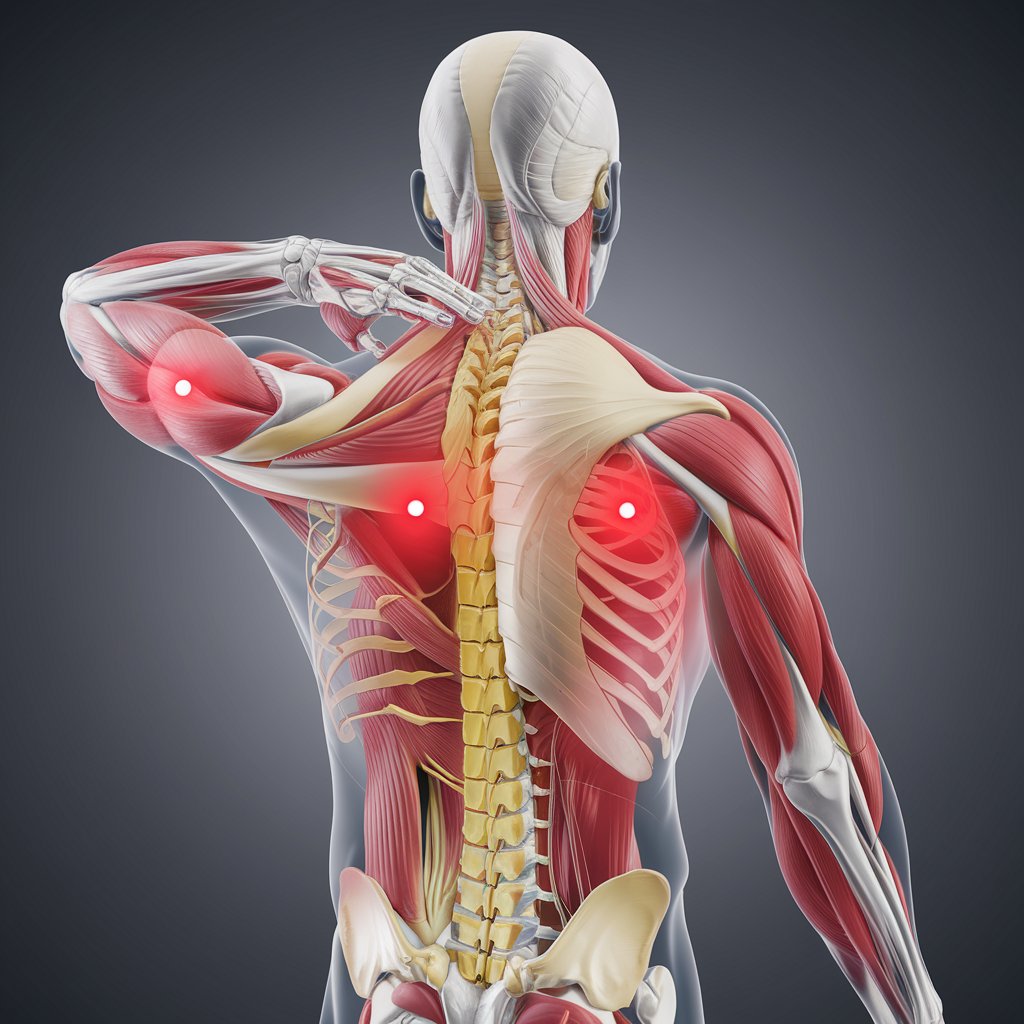
Trigger points are painful spots in muscles that limit movement. Are you curious about their causes and treatments? This article covers symptoms and effective remedies for trigger points, helping you find relief. Understanding Trigger Points When you have muscle knots, also known as trigger points, you’ll feel pain and weakness in specific hyperirritable spots within your skeletal muscles. You might notice these areas as tight bands within your muscles that limit your range of motion and make it difficult for you to perform even basic tasks. Unlike the widespread muscle cramps you might experience that affect your entire muscle, trigger points only impact a small segment of your muscle tissue. These notorious knots cause persistent and intense pain that can disrupt daily life activities. Once activated, they may interfere with normal movement and provoke discomfort at their location and in distant parts of your body (referred pain). Understanding trigger points and their mechanism is beneficial in seeking solutions for this prevalent problem. Definition and Characteristics According to Drs. Janet Travell and David Simons (1992), the definition of a trigger point is “a highly irritable localized spot of exquisite tenderness in a nodule in a palpable taut band of (skeletal) muscle.”The hyperirritable locations are situated in a tight strand of muscle fibers and can be detected as distinct, tender areas through palpation. Trigger points that cause persistent and worsening pain can develop into a chronic condition known as myofascial pain syndrome, contributing to both musculoskeletal and mechanical muscular pain. Research has shown that a high prevalence of trigger points is associated with: myofascial pain psychological disturbance somatic dysfunction Types of Trigger Points Trigger Points can be divided into several groups: 1. Active Trigger Points Active trigger points are well-known for their ability to provoke pain even when the affected muscle is not moving. These specific spots can generate intense, sharp discomfort directly at their location and send pain to distant body regions. 2. Inactive or Latent Trigger Points Alternatively, latent trigger points may not induce pain spontaneously but can limit one’s range of motion and lead to muscle stiffness. It has been suggested that these points are more common in those who live a sedentary lifestyle. Pain from these points only becomes apparent when direct pressure is applied, rendering them less obvious than active trigger points. 3. Central Trigger Points These are the most well-established trigger points when they are active. Also known as primary trigger points, they are located at the center of the muscle belly, where the MEP enters the muscle. Causes of Trigger Points Usually, TrPs develop as a result of: Vitamin Deficiency – B1, B6, B12, C, folic acid, and iron Chronic Stress Condition Stress and Anxiety Sleep Problems Muscle Injury Bad Posture Symptoms of Trigger Points Trigger points can produce a wide array of symptoms, most notably acute and chronic pain that is felt directly at the trigger point or as referred pain in different parts of the body. For example, a trigger point situated in your shoulder might lead to discomfort extending down your arm or up into your neck. Due to similar pain patterns, trigger points are often confused with other ailments like pinched nerves or migraines. Muscle tension and a decrease in range of motion are also prevalent indications associated with trigger points. The application of pressure on such areas may result not only in severe localized pain but also provoke an involuntary “jump sign,” where you may react to the stimulation. This phenomenon typically occurs alongside a local twitch response, an observable or palpable contraction within the muscle. Maintaining Trigger Point Factors The presence of one or more of the following factors presents challenges in the prevention and treatment of trigger points over the long term: Aging Obesity Anorexia Stress patterns Chronicity of trigger point Psychological factors (anxiety, depression, anger) Posture Common Locations of Trigger Points 1. Neck and Shoulders You may frequently develop trigger points in your neck and shoulder areas, especially within the trapezius muscle. These muscle knots can cause tension headaches and significant discomfort in the neck and shoulders. When you engage in repetitive movements or maintain poor posture, you’re more likely to experience the formation of these trigger points. Massage therapy and similar techniques can effectively reduce muscle tension and provide relief by working on the affected areas. 2. Lower Back You could experience trigger points in your lower back, specifically within the Quadratus Lumborum and Iliopsoas muscles; these muscles are common culprits of chronic pain and musculoskeletal issues. Such areas can cause severe distress, potentially hindering your ability to perform everyday tasks. The pain from trigger points in your lower back can radiate throughout various body regions. As a result, specialized interventions like physical therapy and musculoskeletal rehabilitation become essential in addressing your referred pain. 3. Other Frequent Areas You may develop trigger points in your gluteal muscles that can cause pain extending down your legs, often mimicking sciatica symptoms. Similarly, trigger points within your temporomandibular joint can induce jaw discomfort and headaches, which might be mistakenly attributed to dental issues. Recognizing and addressing these areas promptly is crucial for preventing the development of chronic pain conditions. The presence of trigger points in both your gluteal region and temporomandibular joint can significantly impede your mobility and diminish your quality of life due to the intense pain experienced in these areas. Prevention Strategies for Trigger Points 1. Stretching Proper stretching helps prevent muscle imbalances that can lead to the formation of trigger points. Follow these simple steps to stretch effectively and maintain muscle health. Warm Up First Stretch Slowly and Gently Maintain Good Posture Don’t Bounce Breathe Deeply Stay Consistent 2. Strengthening Not using your muscles regularly or staying inactive for long periods leads to muscle weakness. When muscles are weak, they struggle to support your body and handle daily activities, making them more likely to get strained or
What is Aromatherapy Massage: Benefits & Techniques Explained
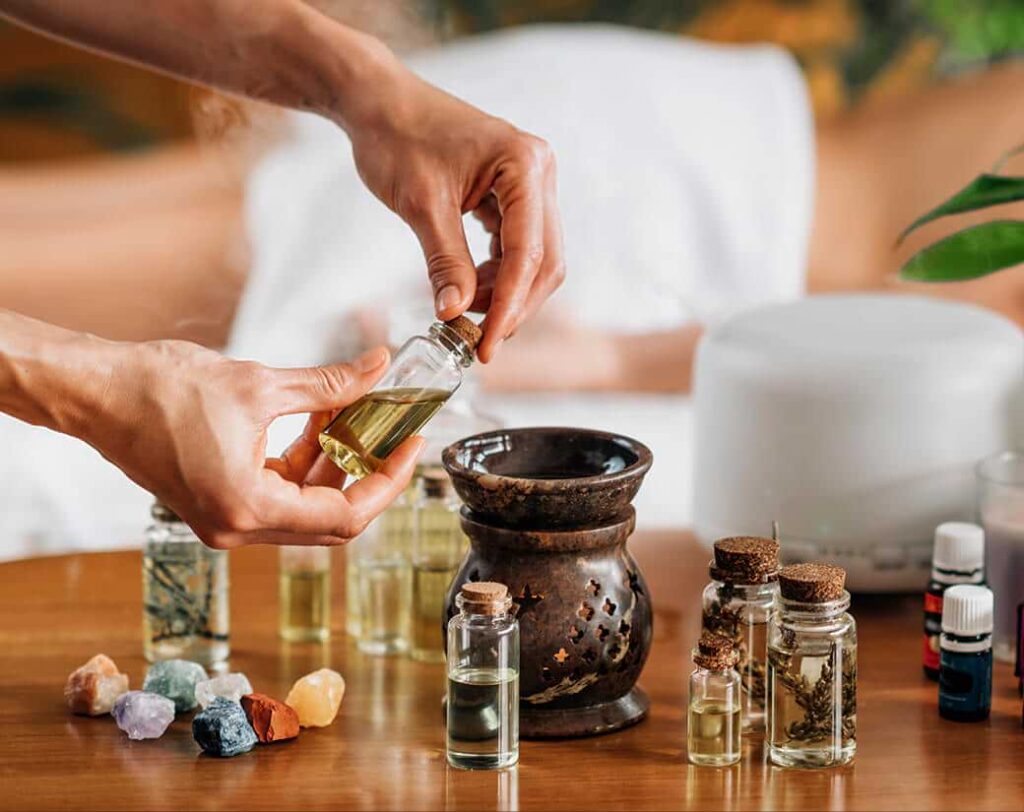
Aromatherapy massage combines the physical benefits of professional massage with the therapeutic effects of essential oils, helping to relieve stress, improve mood, and address various physical ailments. The properties of essential oils, when administered during an aromatherapy massage, can be absorbed through the skin, inhaled, or diffused. This article will guide you through what aromatherapy massage is, how it works, and its many benefits and techniques. Benefits of Aromatherapy Massage Aromatherapy massage is designed to cultivate a serene mindset while promoting overall well-being. It merges the nature of tactile therapy with aromatic essential oils, known for their ability to uplift the spirit and address physical or psychological concerns. I’ve included the foremost benefits of this therapeutic practice for you below: Decreases muscle tension When you receive an aromatherapy massage, molecules from essential oils penetrate your skin and enter your circulation, contributing to healing effects. The efficacy of this method is amplified by specialized massage techniques that improve blood flow and transport these botanical essences more effectively. Additionally, inhaling the scent of essential oils plays a critical role in influencing your physical and emotional state. When you breathe in essential oil aromas, odorant molecules travel through the olfactory nerves to the brain’s limbic system, which is responsible for emotions, mood regulation, and memory. Which Conditions Aromatherapy Massage Can Help With?Aromatherapy massage has shown benefits for the following conditions: What Are Essential Oils & Do They Really Work? Essential oils are volatile chemicals that enter the body primarily through skin absorption or nasal inhalation. In addition, they can work through oral administration. Extracted directly from flowers, resin, leaves, bark, fruit, or ruts of a plant or tree, these potent oils bring the essence of nature straight to you. Essential oils have been used medicinally for thousands of years in a variety of nonconcentrated forms. Their true power lies in addressing physiological disharmony and helping your body heal itself. Some essential oils have scientifically backed benefits, but their efficacy varies depending on the oil, its application, and the condition being treated. Massage has been a powerful tool for promoting relaxation and overall well-being since ancient times. When combined with essential oils, it becomes even more effective. The Science-Backed Benefits of Aromatherapy Massage A 2020 study demonstrated the promising results of inhalation and massage aromatherapy in reducing anxiety. When integrated into your regular massage practices, these precious essential oils contribute significantly to elevating your overall health. Studies have also shown that aromatherapy massage can be beneficial for patients being treated for cancer. Cancer patients receiving weekly aromatherapy massages experienced significant reductions in stress and anxiety, accompanied by notable improvements in immune system functioning. Most Common Essential Oils Used in Aromatherapy Massage Choosing the Right Essential Oils for Your Massage Session Integrating aromatherapy into various massage techniques can significantly boost their healing benefits. Whether you opt for the smooth, flowing strokes of Swedish Massage, the more forceful manipulation characteristic of Deep Tissue Massage, or the comforting heat involved in a Hot Stone Massage, essential oils are key to augmenting your session and delivering extra advantages. Depending on your chosen type of massage and your requirements, different essential oils can be used to customize each experience. Aromatherapy Oils for Relief and Recovery 1. Muscle Ache Relief Lavender and peppermint essential oils are natural remedies for discomfort and soreness after a rigorous training session or when athletes are involved. Lavender is renowned for its calming and anti-inflammatory properties, helping to relax tense muscles and promote recovery. With its cooling and analgesic effects, Peppermint reduces pain and invigorates tired muscles. A blend of these oils and professional massage may provide a powerful solution for easing physical strain and enhancing post-workout recovery. 2. Inflammation Inflammation is the body’s natural response to injury, infection, irritation, bacteria, and anything that your body sees as a threat. However, when it becomes chronic, it can contribute to a range of health issues, including joint pain, autoimmune conditions, and skin disorders. Regarding muscle damage and inflammatory markers post-exercise, a 2018 study has identified massage therapy as the most effective method for reducing soreness and muscle fatigue, while compression-based methods and cold water immersion effectively alleviate fatigue. Combining massage’s therapeutic benefits with essential oils’ healing and revitalizing effects creates a powerful synergy that enhances holistic health and well-being. Here are some anti-inflammatory essential oils that, in combination with a carrier oil, can effectively reduce inflammation and promote healing: Eucalyptus Ginger Clove Lavender Oregano Roman Chamomile Thyme Turmeric Tea-Tree 3. Menopause Symptoms Menopause is a normal part of aging for a woman and defines the official end of fertility and the menstrual cycle. The transition can bring symptoms such as joint and muscle discomfort, hot flashes, night sweats, etc. After menopause, women become more susceptible to certain health conditions, making it essential to stay in good shape through a balanced diet, adequate sleep, proper hydration, and sufficient Vitamin D to support bone health. In addition to these lifestyle practices, studies have shown that aromatherapy can play a supportive role by reducing depressive symptoms in menopausal women. Recommended essential oils for aromatherapy massage to alleviate menopause symptoms: Rose geranium Lavender Rose Jasmine 4. Osteoporosis Osteoporosis occurs when the creation of new bone doesn’t keep up with the loss of old bone and they are more likely to fracture. Preventing osteoporosis involves maintaining a healthy lifestyle with weight-bearing exercises, adequate calcium and vitamin D intake, and avoiding risk factors that contribute to bone loss. Essential oils that protect from bone loss: Sage Pine Eucalyptus Rosemary How do I choose the right Carrier Oils? Essential oils are quite concentrated and can lead to skin irritation if not properly diluted, which is why carrier oils are vital when performing aromatherapy massages. Some of the most favored carrier oils for this purpose include: Coconut oil is renowned for its anti-inflammatory properties, healing support, and role in boosting collagen production. All contributing to overall skin health. Sweet almond oil
Hot Stone Massage Explained: A Soothing Therapy for Mind & Body
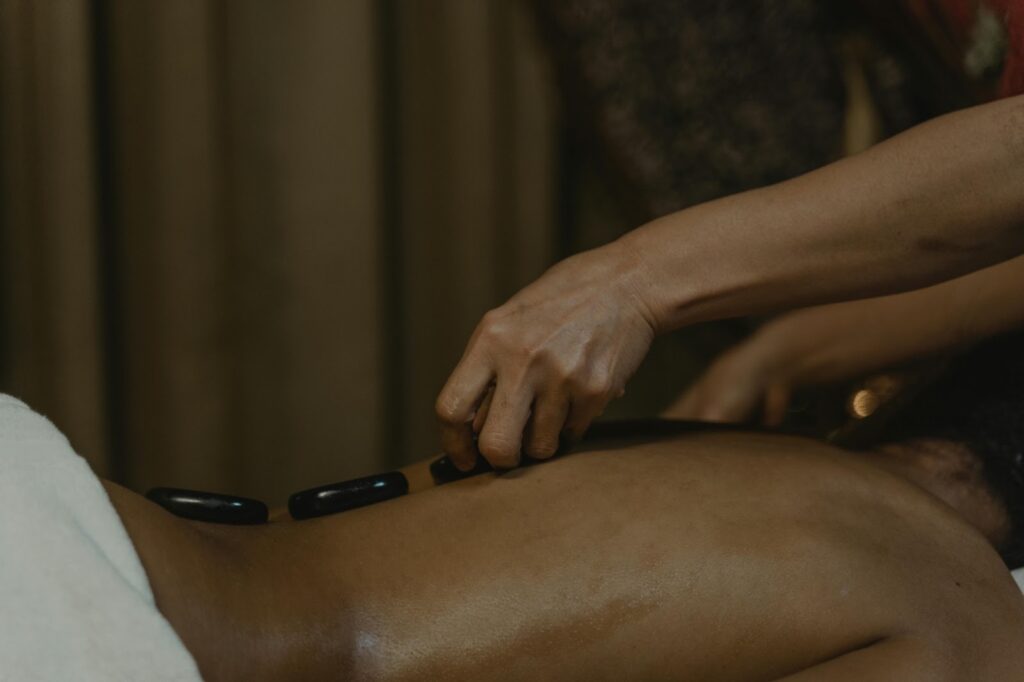
Hot stone massage offers an elegant solution for stress relief. It also soothes anxiety and helps recalibrate the nervous system. By creating a tranquil environment that encourages mental and physical decompression, hot stone massage transforms a simple treatment into a rejuvenating experience of holistic well-being. What is a Hot Stone Massage? Hot stone massage employs smooth, heated basalt stones to help you relax muscles and alleviate tension. These stones are typically placed on specific points of your body, also known as Chakras. They are found at points that run up the body from the base of the spine to the top of the head and can be located on the front and back of the body. The temperature of the stones is advised to be between 130 and 135 degrees Fahrenheit (50 and 57 degrees Celsius). The primary health advantages of hot stone massage include unmatched relaxation and deep muscle penetration. This is achieved through the combination of hot stone therapy and massage techniques such as the following: Top Benefits of Hot Stone Massage 1. Improve Sleep Quality Hot stone massage can significantly improve your sleep quality due to its deep relaxation effects. A 2024 study explored massage interventions, specifically slow-stroke back and hot stone techniques, to mitigate sleep disruptions among orthopedic surgical patients. The findings demonstrated significant potential for enhancing sleep quality in the postoperative period. Also, a 2019 study has shown how hot stone massage therapy might improve sleep quality for individuals on maintenance hemodialysis. In the trial, 60 participants received 12 sessions of basalt stone massage. The results showed a significant boost in sleep quality, highlighting its powerful impact on restorative rest. 2. Pain Relief One of the best things about a hot stone massage is that it can help relieve pain, which is something you’ll really appreciate if you have chronic aches. The heat from the stones can help alleviate chronic pain conditions like arthritis and backaches. As your muscles loosen, stubborn knots start to release, making it easier to work out tension and leaving you feeling more relaxed and refreshed. Massage has been known for centuries as an exceptional relaxation therapy, and even a brief 20-minute session can provide great relief. A 2025 study found that a simple massage can significantly reduce pain, tension, and anxiety in patients recovering from abdominal colorectal surgery. 3. Stress Reduction When you experience a hot stone massage, you’ll discover a powerful way to melt away stress and enhance your well-being. Studies have shown how massage therapy offers a potential stress-reduction strategy for housewives, indirectly supporting breast cancer prevention through immune system enhancement. The meditative state induced by the massage, combined with the therapist’s touch, creates a sensory experience that encourages the release of endorphins. This blend of physical and mental relaxation improves anxiety relief and stress levels. Studies have also shown that massage therapy lowers stress hormones (cortisol) and increases feel-good chemicals (serotonin and dopamine), improving mood and supporting overall health. 4. Mood Enhancement When stress weighs you down, your body’s natural defenses can suffer, but that’s where massage therapy comes to your rescue. Hot Stone Massage is an excellent immunity booster. During your session, you’ll feel your nervous system shift into a state of deep relaxation, clearing mental fog and melting away tension. Combining warmth and skilled massage techniques triggers your body to release endorphins, creating a profound sense of peace that stays with you long after your session. The benefits of massage therapy for women with breast cancer focus on improving mood, reducing stress, and boosting immune function, including increased dopamine, serotonin, and NK cell levels. 5. Improved Circulation The stones’ therapeutic effects can enhance blood flow to specific areas, reducing inflammation and improving overall circulation. This is achieved through vasodilation, where blood vessels expand, allowing for increased blood flow to specific areas of the body. This process delivers essential nutrients and oxygen to muscles and tissues, facilitating healing. There are a variety of types of massage that can be used to improve circulation in combination with hot stones, including: Who Can Benefit from Hot Stone Massage? Hot stone massage is beneficial, particularly if you are suffering from chronic pain conditions such as fibromyalgia and arthritis. Also, if you are experiencing high stress levels, insomnia, or muscle discomfort and tension, you can find relief through this therapeutic technique. The warmth of the stones helps to relax muscles and ease tension, making hot stone massage therapy ideal for those with muscle stiffness and tightness. Aromatherapy may enhance the benefits of hot stone massage therapy. Preparing for Your Hot Stone Massage Session Proper preparation is essential for a comfortable and effective hot stone massage session. Here are some tips to have in consideration prior to your hot stone massage session: Eat Light and Stay Hydrated – Before your massage, make sure you have a light meal or snack and drink water. Arrive Early – Plan to arrive 5 to 10 minutes in advance to prepare yourself. Dress Comfortably – Wear loose, comfortable clothing or consider a bathrobe for ease and relaxation. Remove Jewelry – Take off any accessories to avoid discomfort during the session. Communicate with Your Therapist – Always start with an open conversation with your therapist to discuss your preferences and needs for a personalized experience. Contraindications for Hot Stone Massage While hot stone massage may provide you with many benefits, it’s important to understand the potential risks and necessary precautions before booking a session. Skin sensitivity is a critical factor to consider when receiving a hot stone massage. If you suffer from conditions like eczema or sunburn, you may find the heat from the stones uncomfortable and potentially irritating. Certain medical conditions require extra caution when considering hot stone massage. Your healthcare provider should be consulted before receiving a hot stone massage for any medical condition, such as deep vein thrombosis or treatments like radiation or chemotherapy. Prioritizing safety and personal health by
The 7 Essential Oils Needed for a Healthier You
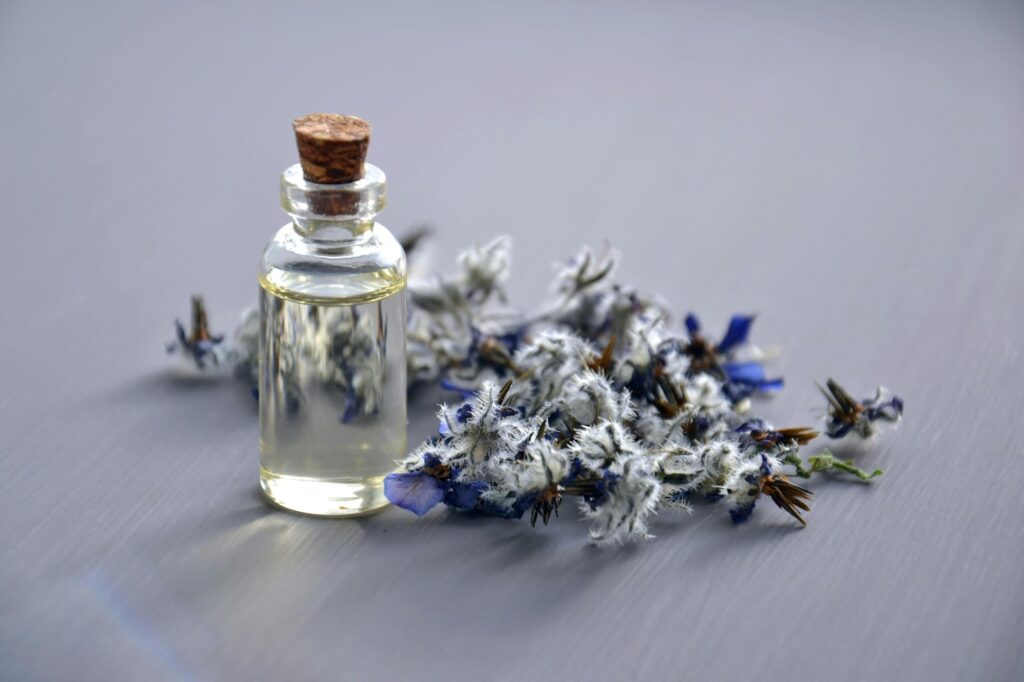
What is Essential Oil? Essential oil is a mixture of natural aromatic volatile oils extracted from plants. The most common methods of extraction are steam distillation and cold pressing. Essential oils are used in aromatherapy, pharmaceuticals, fragrance, food, and flavors. They have been utilized medicinally over the centuries and have become an established complementary natural therapy. Benefits of Essential Oils Antioxidant It’s also an excellent choice if you are looking to reduce pain and enjoy its relaxing and soothing properties while opting for an aromatherapy massage. A 2020 study showed the effectiveness of lavender oil in treating psoriasis-like skin inflammation, offering scientific evidence for its topical use. 2. Rose Essential Oil One of the most versatile oils for skincare, rose essential oil, is obtained from the petals of Rosa Damascena Mill. It helps prevent collagen breakdown, lowers gene expression related to skin aging, and improves antioxidant enzyme activities. Research also highlights its effectiveness in protecting the skin from UV-induced damage. Studies have shown that rose essential oil provides pain relief in patients with dysmenorrhea, helps regulate irregular menstrual periods, and supports uterine health. It also has natural antidepressant properties that can boost mood during menstruation, helping you feel more balanced and at ease. Additionally, if you just had a C-section, a 2020 study found that simply inhaling a few drops of rose essential oil after surgery could help you ease pain and calm those post-surgery jitters. 3. Eucalyptus Essential Oil The essential oil of Eucalyptus is revered for its antibacterial and anti-inflammatories properties. When you have a cold or the flu, eucalyptus essential oil is an expectorant to ease discomfort and remove toxins and germs from your body. Conversely, Eucalyptus essential oil offers exceptional care for various scalp conditions if used as a scalp tonic. It effectively combats dandruff and seborrheic dermatitis while providing a natural defense against bacterial and fungal infections. To maximize its benefits, blend eucalyptus oil with nourishing carrier oils or opt for hair care products specifically formulated with the ingredient. 4. Tea Tree Essential Oil Once a hidden gem in traditional medicine, it’s now a go-to natural solution for combating infections and calming inflammation. Looking at everything from its germ-fighting to local antiseptic for burns and cuts, tea tree essential oil can provide relief for various health issues, including: If you have oily or acne-prone skin, tea tree oil can be a game-changer for you. Studies show that tea tree oil is especially effective for oily and acne-prone skin, helping to balance oil production, clearing up stubborn spots, and even improving chronic gingivitis. 5. Rosemary Essential Oil Rosemary essential oil, rich in compounds like eucalyptol and camphor, can help you fight harmful microbes and neutralize damaging free radicals, protecting your skin and overall health. It has been used for centuries to improve brain function, as well as neurological deficits and inflammatory conditions. Studies have shown that rosemary essential oil can potentially protect the liver from damage by boosting the body’s defense mechanisms. Rosemary is also used as a health-boost ingredient in the drinking industry. With its beneficial biological properties, if you’re looking for a natural way to support your health, it’s definitely a go-for choice. 6. Peppermint Essential Oil Peppermint is a genus of plants in the taxonomic family Lamiaceae found in temperate regions worldwide. It can help protect brain function and promote liver, gastrointestinal, kidney, and nervous health. Plus, it can stop fevers, ease muscle tension, and clear sinuses. Other uses for peppermint essential oil: Peppermint is an excellent choice for easing discomfort after physical activity, energizing, and providing you the stamina to recover. Its analgesic and antispasmodic properties make it great for relaxing tight muscles. The cooling sensation of peppermint is also refreshing after an intense training session. 7. Frankincense Essential Oil Frankincense essential oil can be significantly beneficial if you seek emotional reinforcement and mental peace. Try using it during your meditation and yoga practices to boost concentration. When Frankincense essential oil is used with a diffuser, it alleviates stress and tension and promotes an ambiance of calmness. Research has been made on Frankincense essential oil efficiency as a topical anti-aging therapy and shows promising results. How do I store my Essential Oils? Frequently Asked Q’s Can essential oils be applied directly to the skin? You should always dilute essential oils with a carrier oil before applying them to your skin. How long can I inhale essential oils directly? It’s best to inhale essential oils directly for no more than 15-20 minutes. Keeping it short will help you enjoy the benefits without any discomfort. Is it safe to ingest essential oils? It’s unsafe to ingest essential oils without guidance from a qualified practitioner. Always consult a professional before considering ingestion. How should I store my essential oils? Store your essential oils in a cool, dark place in glass or stainless-steel containers with tightly sealed lids to keep your essential oils fresh. This prevents oxidation and evaporation, ensuring they last longer. What are the benefits of using essential oils in aromatherapy? Using essential oils in aromatherapy can significantly reduce anxiety and improve your mood, making it a great way to enhance your overall well-being and sleep quality. It’s a simple yet effective tool for supporting both your physical and emotional health!

